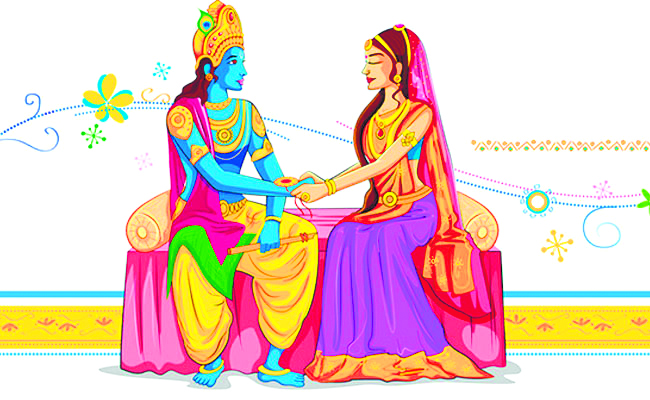


Bhai Dooj, also known as Bhai Tika, or Bhau Beej, has its roots in Hindu mythology and is associated with various legends and stories. While there are different narratives linked to the festival, one popular mythological origin is often linked to the stories of Lord Krishna and his sister Subhadra. Here’s how Bhai Dooj is connected to Hindu mythology:
Lord Krishna and Subhadra:
One of the most commonly cited stories behind Bhai Dooj is related to Lord Krishna and his sister Subhadra. According to the legend, Lord Krishna visited his sister Subhadra after defeating the demon Narakasura. Subhadra welcomed him with love and affection, applying a tilak on his forehead and performing aarti. In return, Lord Krishna bestowed blessings upon her.
The Tilak Tradition:
This meeting between Lord Krishna and Subhadra is believed to be the origin of the tradition of sisters applying a tilak (a mark made with vermilion or sandalwood paste) on the foreheads of their brothers on Bhai Dooj. It is seen as a symbolic gesture of love, protection, and the bond between siblings.
Symbolism of Aarti:
The aarti performed by sisters for their brothers on Bhai Dooj is reminiscent of the aarti that Subhadra performed for Lord Krishna. The aarti is a symbolic act of welcoming and honoring the brother.
The Protective Bond:
The story of Lord Krishna and Subhadra also highlights the protective nature of the bond between brothers and sisters. Lord Krishna’s act of defeating the demon Narakasura is seen as an embodiment of the protective role that brothers play in the lives of their sisters.
Sibling Love and Harmony:
Bhai Dooj, through its mythological connections, emphasizes the importance of love, harmony, and mutual respect between siblings. It reflects the positive and supportive aspects of the sibling relationship.
While the story of Lord Krishna and Subhadra is one commonly associated with Bhai Dooj, it’s important to note that variations exist in different regions of India, and other myths and legends may be linked to the festival. The diversity in stories reflects the rich cultural tapestry of Hindu mythology and traditions.